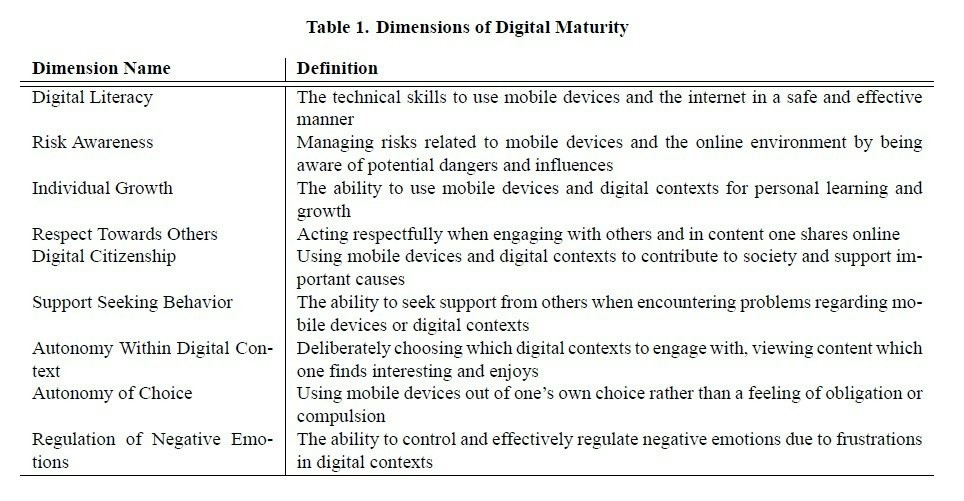DIGYMATEX researchers Aqib Siddiqui and Konstantina Valogianni, both of the IE Business School, presented their paper titled “Understanding Children’s Digital Maturity: A Socio-Technical Perspective” at the Conference on Information Systems and Technology (CIST) held at Indiana University-Purdue University Indianapolis on October 15-16, 2022.
Siddiqui and Valogianni’s paper focused on applying machine learning to cluster and classify young IT users according to their levels of digital maturity and intensity of use.
“The implications of this study are noteworthy for parents and educators since it enables them to understand children’s behavioral attributes based on the kind of interactions they have with digital technologies. The information derived from this model could be used by parents who sometimes struggle to identify underlying factors of their children’s deviant behavior when they deal with ‘real-life’ situations,” Siddiqui and Valogianni commented in the paper.
In their research, Siddiqui and Valogianni closely investigated how children use digital technologies (ICT), in order to identify various digital maturity levels based on their use patterns, and group them accordingly. To do so, the researchers used the general lens of psychosocial maturity in a digital context, together with the concept of digital maturity as organised along nine key dimensions.
Their first conclusion was that children can indeed be categorised into groups according to their ICT use patterns as based on the nine dimensions, by way of robust K-Means clustering.
Subsequently, Siddiqui and Valogianni used supervised machine learning using a random forest classifier to build a model predicting digital maturity among the children based on their ICT usage patterns, which proved to have a 90 percent accuracy rate.
“These results contribute significantly in the use of ICT by children literature since there is, to the best of our knowledge, no research which employs data-driven techniques on real-world data that clusters children based on their ICT usage behavior,” Siddiqui and Valogianni noted.
Using this model, Siddiqui and Valogianni identified three distinct digital maturity groupings:
- High Maturity with Moderate Usage. Children in this cluster “exhibit high psychosocial wellbeing in terms of their interactions with digital technologies”. They “seem well-aware of their actions and consequences online, are respectful to individuals and society while online and have good self-control over their negative emotions and overall technology usage,” the researchers said.
- Average Maturity with Low Usage. Children in this cluster have above-average self-control when it comes to their digital technology use, autonomous behaviour in digital contexts, and respect towards individuals in online communities, and are “fairly aware” of online risks. “The reason they lack digital citizenship and individual growth capabilities can be attributed to the fact that their overall usage of digital technologies is the least”, Siddiqui and Valogianni explained.
- Low Maturity with High Usage. Children in this cluster exhibit poor psychosocial maturity and are more prone to cyber-crime, cyber-bullying and online harassment, due to their impulsive technology use patterns, poor self-control, lack of awareness regarding online risks and high overall ICT usage. “Since children in this group have the highest overall technology usage, these children are more prone to poor well-being,” Siddiqui and Valogianni commented.
Parents, schools and government bodies can make use of the insights gleaned through the study in order to devise better strategies to help children in need of guidance to help improve their online behaviour and overall wellbeing, Siddiqui and Valogianni argue.
“For example, if a child is classified in the Low Maturity with High Usage group, knowing that one of the characteristics of children belonging to this group is low ‘Support-Seeking Behaviour’ an easy accomplishment for parents and/or teachers could be to discuss [online behaviour] and educating the particular child about the difficulties and problems they are facing while interacting with digital devices,” Siddiqui and Valogianni added.
The dimensional perspective on digital maturity allows schools to better understand pupils’ behaviour and to thereby design programmes promoting higher digital maturity among their pupils, based on the characteristics described.
Governments as well can improve parents’ and teachers’ awareness of the potential effects of screentime and carry out training and support programmes for both parents and teachers, to help better guide children in their ICT use at both home and school, Siddiqui and Valogianni noted.


